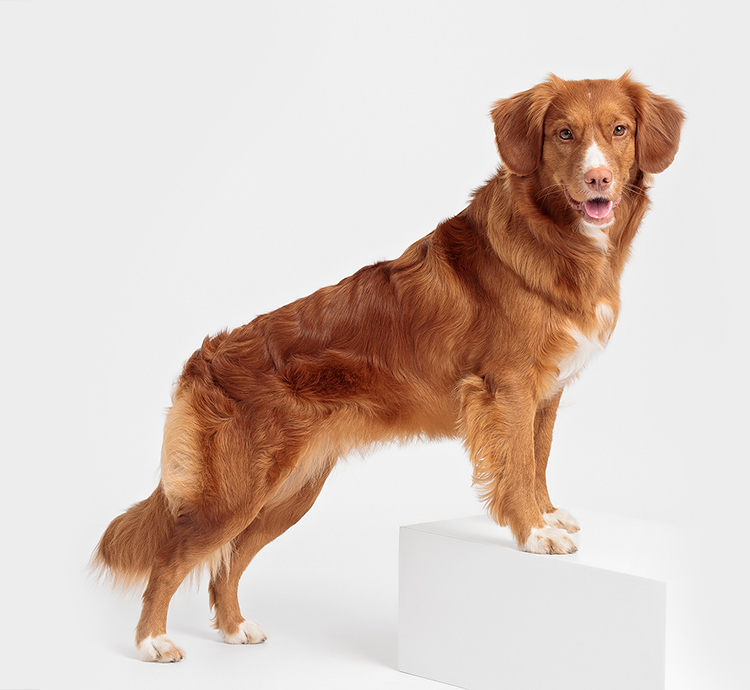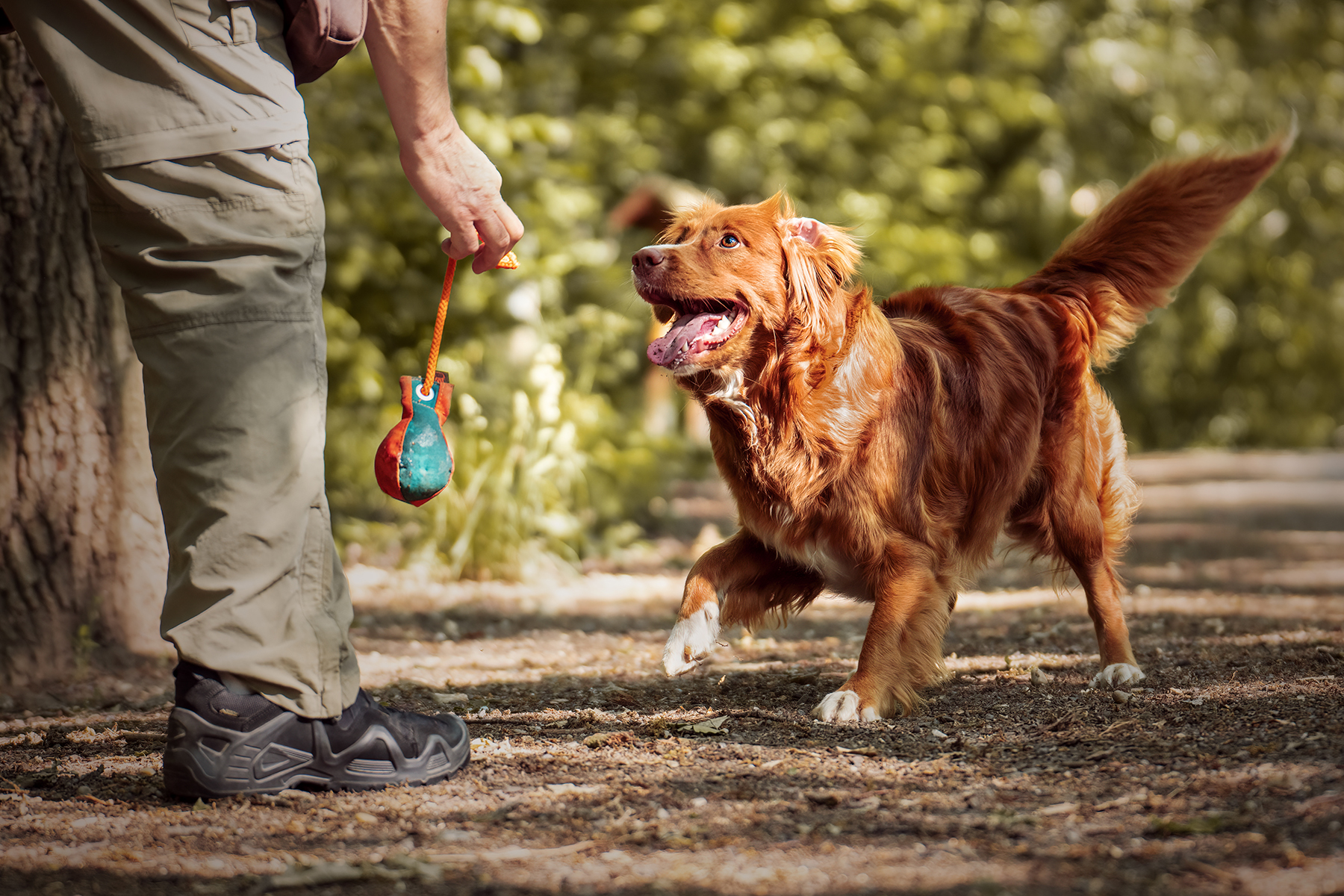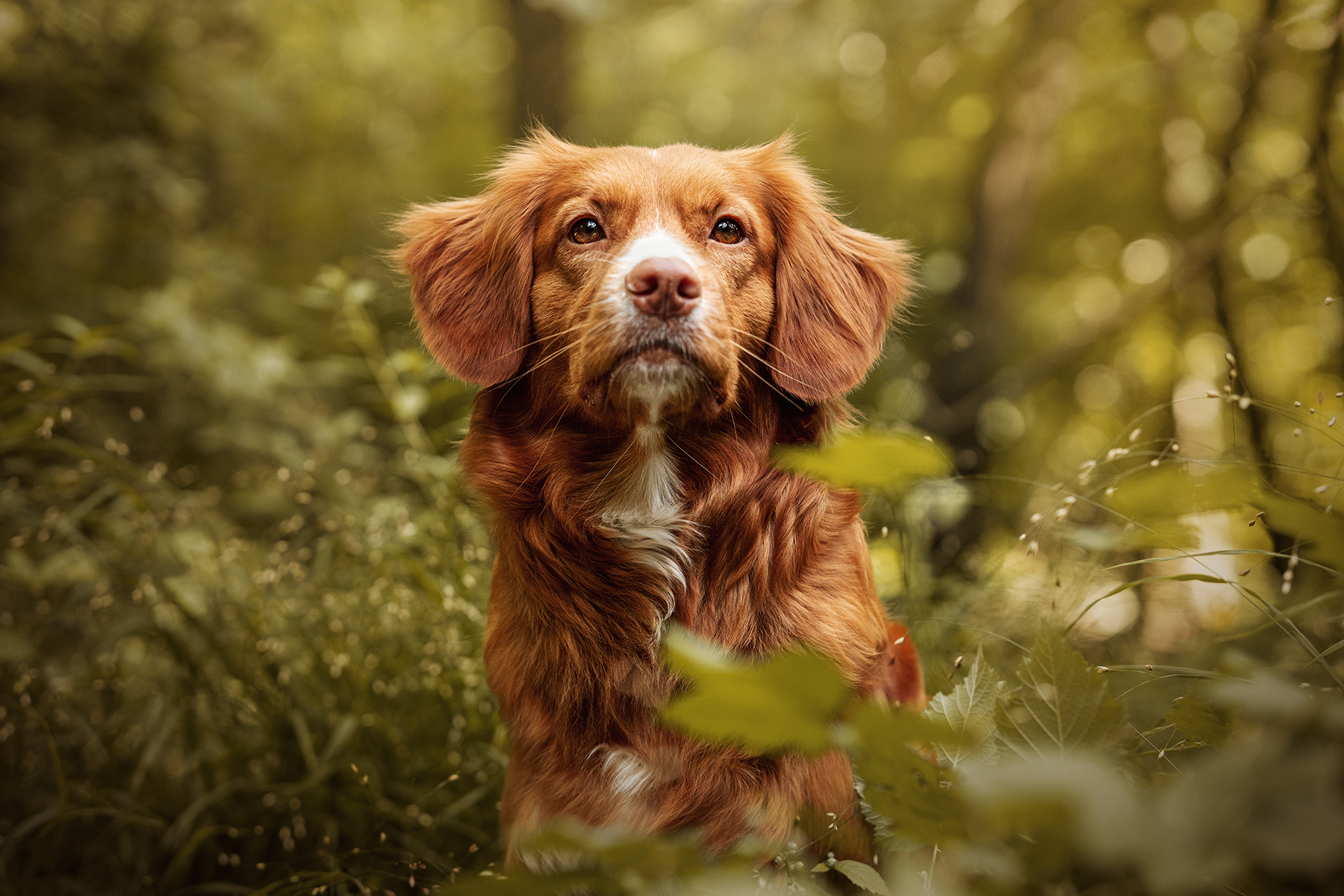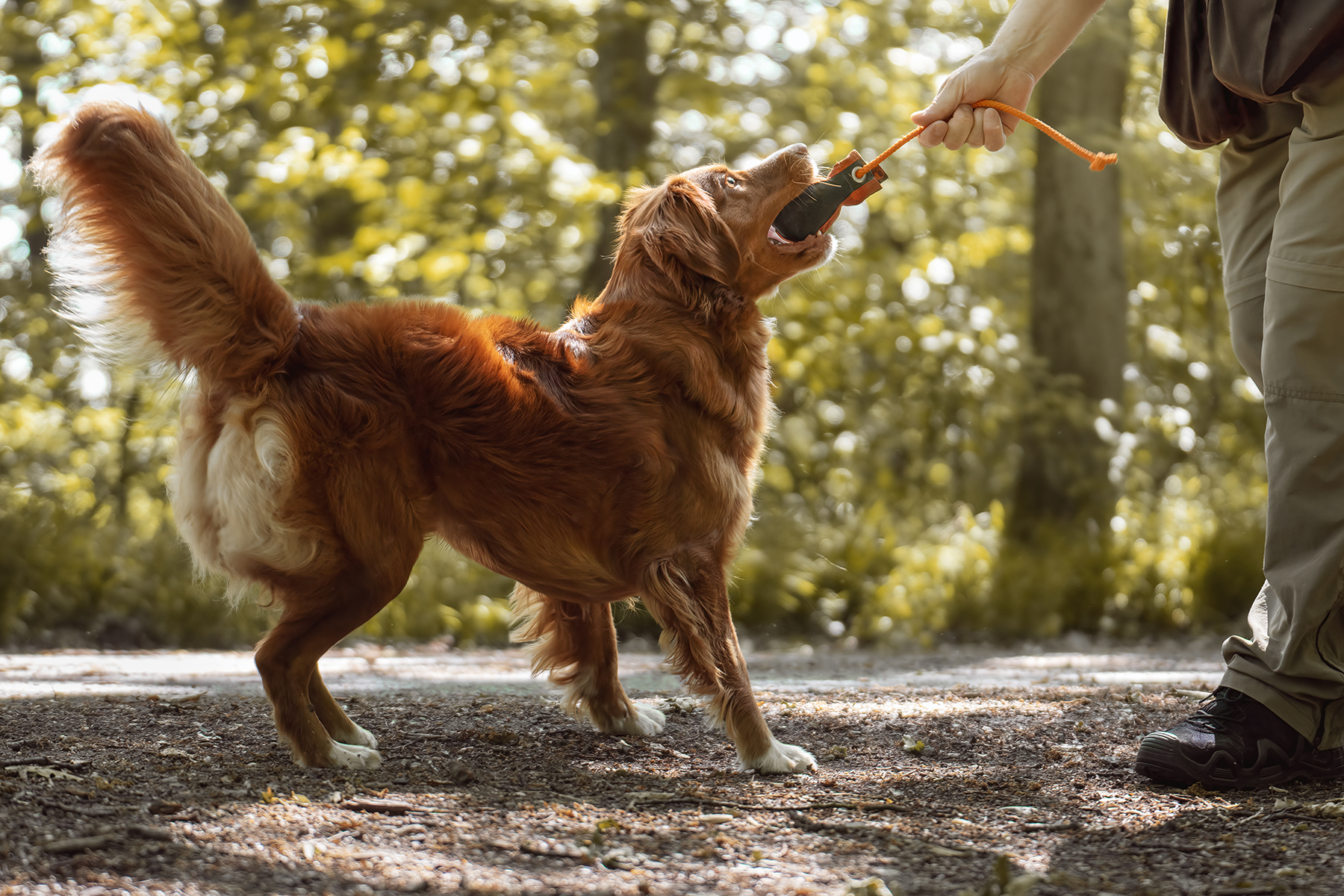


1. “Tolling” is a Middle English Word Meaning to Entice or Pull. The Toller was developed to toll, lure, and retrieve waterfowl. The playful action of the Toller retrieving a stick or ball along the shoreline arouses the curiosity of the ducks offshore. They are lured within gunshot range, and the dog is sent out to retrieve the dead or wounded birds.
2. They Were Originally Known as the Little River Duck Dog. The breed was developed in the community of Little River Harbour in Yarmouth County, Nova Scotia, Canada, around the beginning of the 19th century, to toll waterfowl and as an all-purpose hunting dog. The breed was originally known as the Little River Duck Dog or the Yarmouth Toller.
3. One of Only Two Dog Breeds Used for Decoy Purposes
4. They Are the Smallest of the Retriever Breeds. The Toller is medium sized, compact, powerful, and balanced. Males are 18-21 inches and females 17-20 at the withers, with medium bone and weight proportion to the height and bone of the dog, which makes them the smallest of the retriever breeds. - although it is a Retriever the work with toller is slightly different with any other Retriever.
5. They Have Webbed Feet and a Double Coat. The Toller is well adapted for water, and they love it!
6. This Breed Is Versatile. The Toller is happy to be wherever his people are — whether that is in the conformation ring, hunting, watching a movie, etc. They are able to go from couch potato to bounding retriever in mere seconds. They like new experiences and are easy to take traveling.
7. They “Scream!” Tollers have a penetrating high-pitched bark that sounds like a scream, which they produce to indicate excitement and eagerness. To the uninitiated, this can sound like something terrible; it is high-pitched, frantic, and loud. Owners, with persistence, can train their Toller not to scream. Silence is one of the key elements for a successful working/tolling mode.
8. They are AKC’s 150 Recognized Breed. The Nova Scotia Duck Tolling Retriever was officially recognized by the AKC in 2003 and was the 150 recognized breed.




Utilization:
The Tolling dog runs, jumps and plays along the shoreline in full view of a flock of ducks, occasionally disappearing from sight and then quickly reappearing, aided by the hidden hunter, who throws small sticks or a ball for the dog. The dog’s playful actions arouse the curiosity of the ducks swimming offshore and they are lured within gunshot range. The Toller is subsequently sent out to retrieve the dead or wounded birds.
General appearance:
Medium-sized, powerful, compact, balanced, wellmuscled dog; medium to heavy in bone, with a high degree of agility, alertness and determination. Many Tollers have a slightly sad expression until they go to work, when their aspect changes to intense concentration and excitement. At work, the dog has a speedy, rushing action, with the head carried out almost level with the back and heavily-feathered tail in constant motion
Behaviour and temperament:
Highly intelligent, easy to train and has great endurance. A strong and able swimmer, he is a natural and tenacious retriever on land and from water setting himself for springy action the moment the slightest indication is given that retrieving is required. His strong retrieving desire and playfulness are qualities essential to his tolling ability.
Nose: : Tapers from bridge to tip, with nostrils well open. Colour should blend with that of the coat or be black.
Muzzle: Tapers in a clean line from stop to nose, with the lower jaw strong but not prominent. The underline of the muzzle runs almost in a straight line from the corner of the lip to the corner of the jaw-bone, with depth at the stop being greater than at the nose. Hair on the muzzle is short and fine.
Lips: Fit fairly tightly, forming a gentle curve in profile, with no heaviness in flews.
Jaws / Teeth: Strong enough to carry a sizeable bird, and softness in mouth is essential. The correct bite is tight scissors; full dentition is required.
Eyes: Set well apart, almond-shaped, medium sized. Colour amber to brown. Expression is friendly, alert and intelligent. Flesh around the eyes should be the same colour as the lips.
Ears: Triangular, of medium size, set high and well back on the skull, with the base held very slightly erect, well feathered at the back of the fold, hair short at the rounded tips.
Neck: Strongly muscled and well set on, of medium length, with no indication of throatiness.
Skull: The broad skull is ontly slightly rounded, the occiput not prominent and the cheeks flat. A good measurement for an average male would be 5½ ins. (14 cm) between the ears, tapering to 1½ ins. (3.8 cm) at the bridge of the nose. Length of head is approximately 9 ins. (23 cm) from nose to occiput, but the head must be in proportion to body size.
Stop: Moderate

Topline: Level.
Back: Short and straight.
Loins: Strong and muscular.
Chest: Deep, brisket reaching to the elbows. Ribs well sprung, neither barrel-shaped nor flat.
Belly: Tuck-up moderate.
TAIL: Following the natural very slight slope of the croup, broad at the base, luxuriant and heavily feathered, with the last vertebra reaching at least to the hock. The tail may be carried below the level of the back except when the dog is alert when it curves high over, though never touching the body.
The Toller was bred to retrieve from icy waters and must have a water-repellent double coat of medium length and softness with a softer, dense undercoat. The coat may have a slight wave on the back, but is otherwise straight. Some winter coats may form a long, loose curl at the throat. Featherings are soft at the throat, behind the ears and at the back of the thighs, and forelegs are moderately feathered.
Colour is various shades of red or orange with lighter featherings and underside of tail, and usually at least one of the following white markings : tip of tail, feet (not extending beyond the pasterns), chest and blaze. A dog of otherwise high quality is not to be penalized for lack of white. The pigment of the nose, lips, and eye rims to be flesh-coloured, blending with coat, or black.
The Toller combines an impression of power with a springy, jaunty gait, showing good reach in front and a strong driving rear. Feet should turn neither in nor out and the legs travel in a straight line. As speed increases, the dog should single-track, with the topline remaining level.
FOREQUARTERS: Should appear as parallel columns; straight and strong in bone.
Shoulders: Shoulders should be muscular, with the blade well laid back and well laid, on giving good withers sloping into the short back. The blade and upper arm are roughly equal in length.
Elbows: Should be close to the body, turning neither in nor out, working cleanly and evenly.
Pastern: Strong and slightly sloping.
Forefeet: Strongly webbed of medium size, tight and round, with well arched toes and thick pads. Dewclaws may be removed.
HINDQUARTERS: Muscular, broad and square in appearance. Rear and front angulation should be in balance. Upper and lower sections being approximately equal in length.
Thighs: Very muscular.
Stifles: Well bent.
Hocks: Well let down, turning neither in nor out. Dewclaws must not be present.
Hindfeet: As forefeet
Any departure from the foregoing points should be considered a fault and the seriousness with which the fault should be regarded should be in exact proportion to its degree and its effect upon the health and welfare of the dog.
Eliminating faults:
In adult classes any shyness.
Butterfly nose.
Overshot of more than 1/8 inch (3 mm).
Undershot bite, wry mouth.
Lack of webbing.
White on shoulders, around ears, on back of neck, across back or flanks.
Silvery coat, grey in coat, black areas in coat.
Any colour other than red or orange shades.
Any dog clearly showing physical or behavioural abnormalities shall be disqualified.
N.B. : Male animals should have two apparently normal testicles fully descended into the scrotum